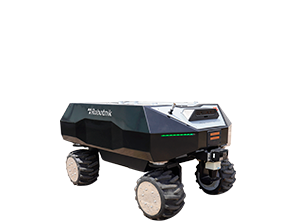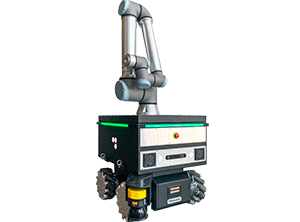Overview
Autonomous inspection of photovoltaic panels
One of Europe’s leading energy companies, a benchmark in power generation and distribution, aims to drive the transition toward more efficient and sustainable operating models in its photovoltaic plants. The periodic inspection of thousands of panels is critical to ensuring maximum performance and detecting potential issues that may affect production. These traditionally manual and labor-intensive tasks require traveling to remote areas with large surfaces and a high number of panels. This increases the time and economic cost of each inspection, which limits the frequency of this type of action.
To optimise these processes and explore new technologies that enable automated inspection, the energy company is collaborating with Robotnik on the development of a new solution focused on the autonomous inspection of photovoltaic panels. This initiative seeks to assess how mobile robotics can improve maintenance quality, reduce operational costs, and provide precise, structured data for smarter plant management.
Robotnik’s robotics solution
RB-WATCHER is Robotnik’s inspection robot deployed at the photovoltaic plant. Equipped with a hybrid RTK-DGPS + SLAM localisation system, the robot maintains centimetre-level accuracy both in open outdoor areas and under structures where GPS signals are lost. Its autonomous navigation allows it to access the corridors between panels and capture geolocated images using a bispectral PTZ camera, achieving comprehensive coverage of the inspection area.
RB-WATCHER integrates 4G/5G connectivity or, alternatively, an RTK base station with radio link, ensuring continuous data flow. Prior to deployment, Robotnik develops a complete simulation of the environment, configures sensors, and validates the full operation before testing on site.
Challenges
The main technical challenge during this trial period lies in demonstrating the RB-WATCHER’s ability to maintain reliable localisation through dynamic transitions between RTK-DGPS outdoors and SLAM in areas without sky visibility. This switching is essential, as the robot must move seamlessly between open spaces and narrow corridors beneath the solar panels. Another challenge is ensuring the capture of geolocated images in GPS-denied zones, preserving the consistency and quality of the visual records for subsequent use in a digital twin.
Likewise, maintaining stable connectivity is critical: if 4G/5G coverage is unavailable, a infrastructure with an RTK station and radio link must be set up. Operationally, the robot must adapt to vegetation-covered terrain with limited height, a necessary condition for proper manoeuvrability. Finally, the project requires close coordination between the energy company and Robotnik throughout the simulation, pre-configuration, field-validation phases and the integration with their existing systems, ensuring that the RB-WATCHER deployment meets the objectives of precision, autonomy, and reliability.

